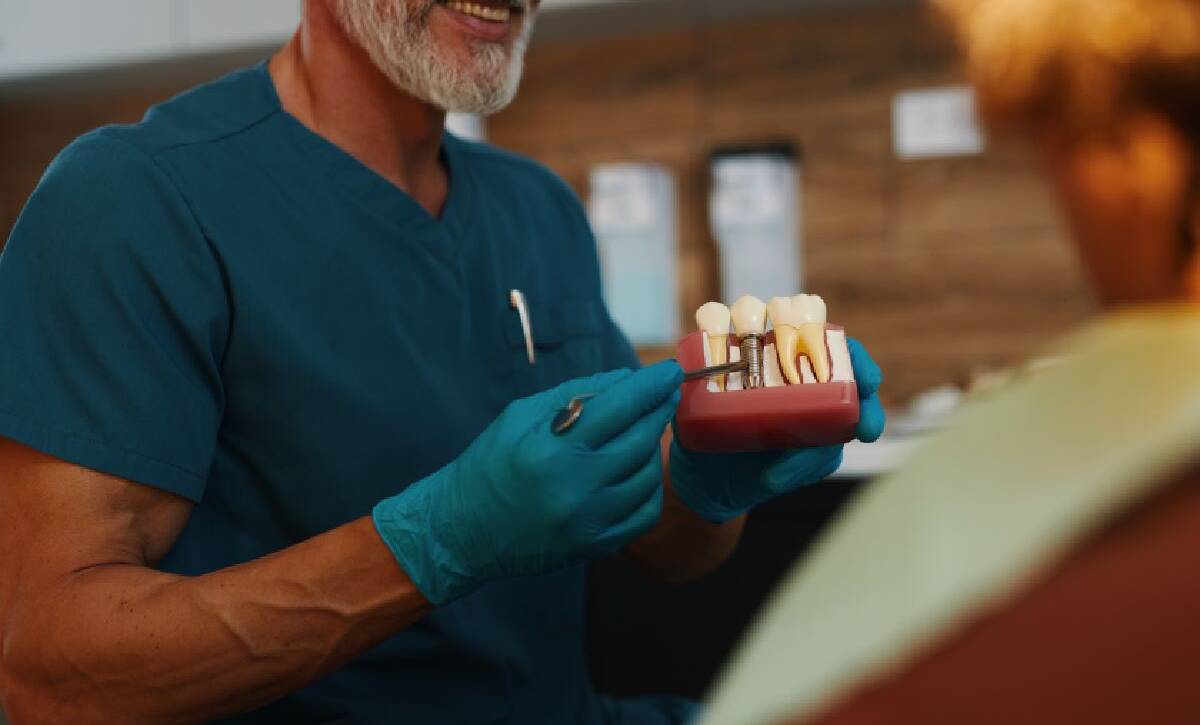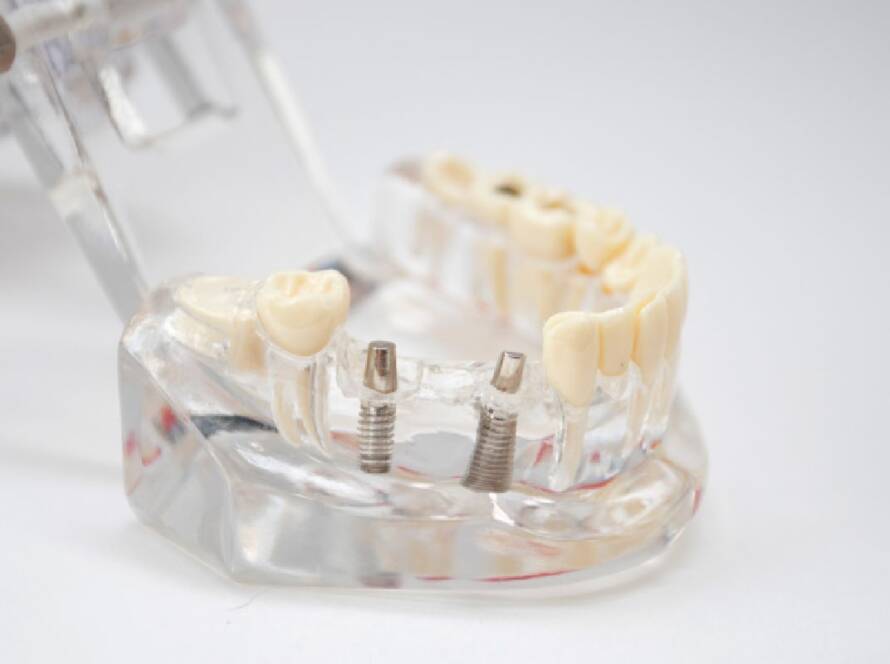
Losing a tooth can feel like missing a beat in your everyday rhythm, you chew differently, you cover your smile, you hesitate. It’s more than aesthetics; it’s a little disruption in how your mouth feels and functions. The good news? Dental implants now offer a way to restore that rhythm with something remarkably close to a natural tooth.
But how do they actually work, beneath the surface, and what makes them such a reliable option? In this article, I’ll guide you through the journey step by step, explain why implants succeed (or sometimes struggle), and help you understand whether you may be a candidate, all without the dental jargon.
Let’s begin by breaking down what a dental implant actually is.
Key Takeaways
- A dental implant mimics a natural tooth by using a titanium (or ceramic) post fused to bone, topped with an abutment and crown.
- Implants work through a process called osseointegration, where bone “grows into” the implant surface over time.
- Success rates for implants in healthy people typically range from 90–98 % over 5–10 years.
- Not everyone qualifies immediately, factors like bone quality, gum health, smoking, and systemic health matter.
- At Humble Memorial Dental, we combine advanced planning, comfort options, and compassionate care to make the implant journey smooth and reassuring.
What Exactly Is a Dental Implant?
When we say “dental implant,” most people think of the visible crown or “fake tooth.” But an implant is actually a system of parts working in harmony:
- Implant / Post — a screw-like structure, commonly made from titanium or ceramic, placed into your jawbone where the missing tooth’s root used to be.
- Abutment — a connector piece that attaches to the implant and supports the final crown.
- Crown (or Prosthetic Tooth) — the visible part, custom-made to match your other teeth in shape, color, and bite.
Why titanium or ceramic? Because they’re biocompatible, meaning your body tolerates them well. Over time, bone and implant merge in a process called osseointegration, creating a strong, stable foundation.
You can think of it like this: the implant is the “root,” the abutment is the “connector,” and the crown is the “cap”, together forming a complete, functioning replacement.
How Implants Become Part of You (Osseointegration)
The magic behind why implants work so well lies in how your body responds. Once the implant is placed, your bone tissue begins a natural healing process:
- Bone cells grow toward the implant’s surface, attaching themselves to microscopic features on the post.
- Over weeks to months, that bond becomes dense and stable, so the implant essentially becomes part of you.
- The interface between bone and implant is critical. Modern implant surfaces are engineered (micro-textured, coated) to encourage stronger and faster bone contact. (Animal studies show implants with treated surfaces produce higher bone-to-implant contact percentages during healing.)
This union offers mechanical stability. When weight or chewing force is applied (through the crown), that load is transferred gently through the implant to your bone, not unlike how a natural tooth would.
Step-by-Step: The Implant Journey
Here’s what to expect, in gentle, patient-friendly terms, at each stage:
1. Consultation & Planning
We’ll review your medical history, take 3D scans (like CBCT), and evaluate how much bone you have. From there, we map the implant’s ideal position, taking nerves, sinuses, and bite forces into account.
2. (If needed) Bone Grafting / Augmentation
If your jawbone is too thin or has resorbed, we may add bone or graft material. This gives the implant more support later. Think of it as “preparing the foundation” before building.
3. Implant Placement Surgery
Under local anesthesia (with sedation options if you’re nervous), the implant is inserted into the jaw. You’ll feel pressure, but not sharp pain. We place it exactly where planning dictates.
4. Healing & Osseointegration
This is the “quiet growth” phase. Over 2–6 months, the bone fuses with the implant. You might wear a temporary crown during this time, so your smile remains intact.
5. Abutment & Crown Placement
Once the implant is stable, we attach the abutment and then the final crown. This is the moment your new tooth fully comes to life, shaped and shaded to match your natural teeth.
6. Ongoing Care & Maintenance
Much like your natural teeth, implants need regular brushing, flossing, and checkups. We monitor for issues like gum inflammation or bone loss, catching problems early.
Throughout, we explain each step in plain language, support you with comfort options, and help you feel confident in every decision.
Why Understanding the Process Matters
Understanding how implants work is more than satisfying curiosity, it helps you:
- Be patient and realistic: the healing phases take time, but that investment yields strong, lasting results.
- Ask good questions: you’ll understand why we talk about bone health, implant angles, or soft tissue care.
- Recognize red flags: if something feels off (pain, mobility), you’ll know to call us early.
- Feel more in control, knowing that you’re stepping smartly into care, not into the unknown.
When the process is clear, anxiety melts, trust builds, and your path forward is less daunting.
Success Rates, Risks & What Can Go Wrong
Implants boast impressive success rates, often between 90–98 % over 5–10 years. Some long-term studies even show survival extending over 20 years, though with increasing risk of complications.
Still, risks exist, and knowing them helps you make informed choices:
- Failure to integrate (early failure): Sometimes bone fails to fuse.
- Peri-implantitis: Inflammation around the implant, similar to gum disease.
- Mechanical issues: Loose abutment, crown fractures, or screw loosening.
- Bone loss over time: especially if oral hygiene is poor.
Certain factors raise risk: smoking, uncontrolled diabetes, poor bone density, aggressive bite forces, and untreated gum disease. But with smart planning, good hygiene, and regular care, most implants last for decades.
Are You a Good Candidate?
Not everyone is ready for an implant right away, but many people are closer than they think. Ideal conditions include:
- Adequate bone volume and density
- Healthy gums (no active periodontal disease)
- Good general health (diabetes controlled, no immune compromise)
- No heavy smoking or habits that stress teeth
If your bone is weak or gums need work, we may start with grafts or periodontal therapy before moving to implant placement.
Your dentist will evaluate with scans and exams to determine whether you need preparatory work, never pressure you into something before you’re ready.
Why Humble Memorial Dental Is a Safe Place for Your Dental Implant Journey
When you’re making a decision as personal as implant surgery, you deserve more than technical skill, you deserve a care experience that honors your fears, hopes, and comfort. At Humble Memorial Dental, we believe in:
- Compassion-first care — from your first call to your final crown, you’ll be treated with kindness and without judgment.
- Advanced planning & precision — we use modern imaging and guided techniques to maximize safety and predictability.
- Comfort options — sedation, gentle technique, and clear communication to ease anxiety.
- Transparent communication — we explain every step, cost detail, and what to expect, no surprises.
- Follow-through & support — your journey doesn’t end after placement. We monitor, guide, and care for your implant long term.
In short: when you choose us for your dental implant in Humble TX, you’re choosing a partner who sees the person behind the tooth.
Conclusion
Understanding how dental implants work, from the post to the crown, from osseointegration to long-term support, empowers you to make better choices, ask smarter questions, and approach treatment with confidence.
Yes, the process takes time, planning, and commitment. But the payoff is a restoration that feels and functions like your natural tooth, preserves bone, and supports your quality of life for years to come.
If you’re in the Humble, TX area and curious whether implants are right for you, reach out. At Humble Memorial Dental, our team is ready to guide you gently, empathetically, and with clarity, from planning to your final, confident smile.
Let’s get started when you’re ready.
FAQ: Common Questions About How Implants Work
Q1: Does an implant hurt when being placed?
You’ll receive anesthesia (and sedation options). Most patients describe pressure, not pain. Any soreness afterward is manageable with mild medications.
Q2: How long before I can chew normally?
It depends. In many cases, you wait until osseointegration is solid (2–4 months). In select cases with strong bone, “immediate loading” may be possible, your dentist can evaluate.
Q3: Can implants fail after years?
Yes, sometimes due to bone loss, gum disease, or mechanical stress. But well-maintained implants often last 10+ years with high survival rates.
Q4: Are implants safe for older people?
Absolutely. Age itself isn’t a barrier. What matters are bone health, systemic conditions, and oral hygiene, if those check out, many older adults succeed with implants.
Q5: How do I care for my implant?
Just like natural teeth: brush (soft-bristle), floss with care, use interdental brushes, and keep your dental checkups. Avoid abrasive habits.
Q6: What’s the difference between implant types (endosteal, subperiosteal)?
The most common is endosteal, placed in bone. Subperiosteal sits on top of bone under gum tissue and is used when bone volume is low.
Endosteal implants often carry success rates of ~90–95 % over 10 years.







